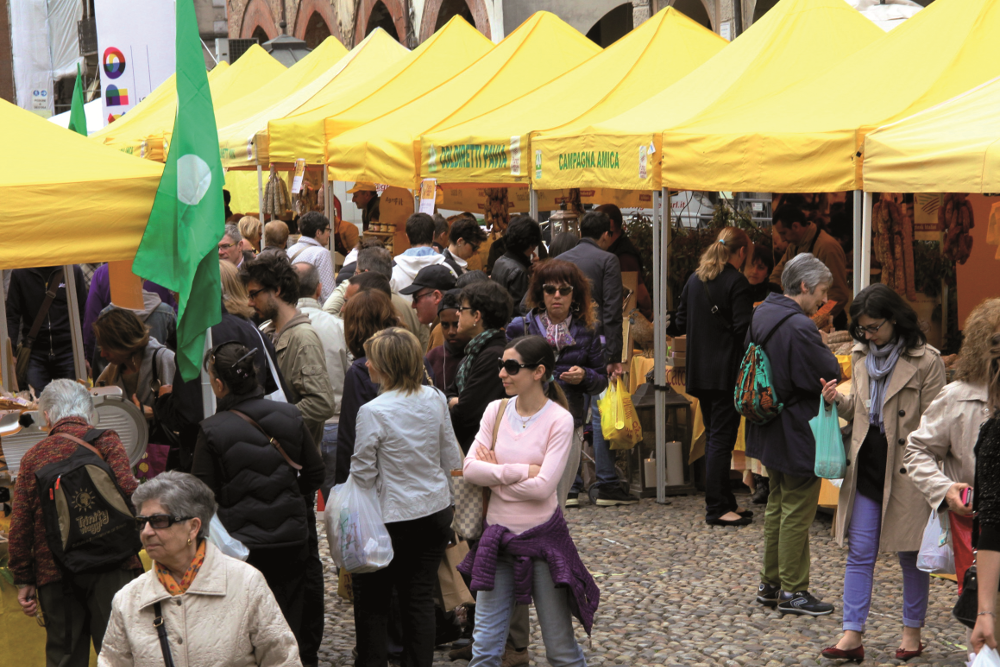Case Study Regions Milan (Italy)
Located in the most fertile plain area in Europe, Milan represents the fulcrum of the entire Lombardy region and its metropolitan area, playing a role as a transfer space between the highly urbanized contexts in the North and the more rural ones in the South, where there is the South Milan Agricultural Park (PASM) which acts as a green belt to the west, south and east. The territory around Milan is characterized by an highly productive agriculture based on the cereal-zootechnical production, with a significant presence of rice and vegetable crops.

The agricultural system is the result of centuries of work of flood control begun in the high Middle Ages. The Cistercian and Benedictine monks (some abbeys are still present within the PASM), who introduced the practice of water meadows, that is permanent pastures irrigated throughout the year, contributed to this work. Many irrigation canals date back to the XV century; also Leonardo da Vinci made its contribution to their functionality.
The PASM take up an area of approximately 46,000 hectares and encompass 61 municipalities, including the municipality of Milan. There are about 1,000 farms, including more than 300 farms with cattle or pigs. In recent years the proximity to the metropolitan area of Milan, which has over 4 million inhabitants, has led to the development of the transformation of products in the farms, often accompanied by direct sales. There are farms that directly produce and sell milk, cheese, meat, cold meats, jams, sweets, honey, vegetables, flour, rice. Particularly important, as well as farm shops, are the distributors of unpasteurized milk, which are present throughout the province of Milan (about 100), and farmer markets (currently 7), which every week directly sell products in the city of Milan.

Given the increasing interest in the sustainability of food systems, as demonstrated by important initiatives promoted by City government, such as the Urban Food Policy Pact and the Milan Food Chart as the heritage document of the EXPO 2015 “Feeding the planet, energy for life�, a focus on strategies to improve sustainability is needed: the reconnection between food demand and supply can play a role in this sense. In fact, through the intensive agriculture of the Milan metropolitan area, the productive system of the whole region is more often threatened by strong urbanization, soil consumption dynamics and competition for resources. These conditions in turn affect the possibility for the local context to adequately meet food requirements, as do changes in consumers’ requests and life-styles, which require the food system to have the capacity to adapt qualitatively and quantitatively to food demand. The rise in food movements, the spread of new dietary habits, the demand for local or organic food, the increasing importance given to environmental and social contents of food, have contributed to establishing a new paradigm for the sustainability of food systems. In this sense alternative systems, short and shortened food chains and local systems arising from citizens’ new awareness and interest in food, can operate towards a more strengthened reconnection between production and consumption, which goes from shorter distances to the fulfilment of consumers’ needs, providing sufficient amounts of food with specific attributes.

Food Chain Innovations
In the Milan area, the local population, citizens or entrepreneurs, are differently involved in system innovations that encompass interlinked social aspects, process innovation and governance initiatives. Some of them are traceable back to shortened relationships between producers and consumers, representing examples of direct sales organized in networks and supported by regulations and consumers’ trust.
The SME project partner Agrimercato is a producers’ association that actively operates for the organization of farmers’ markets, a type of sale that is increasingly demanded by producers who benefit from guaranteed incomes, and strongly recognized by consumers, for their role in strengthening the system of short food chains and the valorisation of local, seasonal and environmental-friendly products.
Solidarity Purchasing Groups (SPGs) are informal structures for the collective purchasing of food made up of consumers who co-operate to buy food and other goods directly from producers, according to the driving principles of equity, solidarity and sustainability. Along with a closer social cohesion among actors and the strength of the local component, their number is constantly changing due to favourable conditions for both producers and consumers, and their capacity in adapting to consumers’ demand for food with specific characteristics, e.g. organic products.
In addition, agricultural districts represent a new model of economic organization that aggregates different and interdependent subjects, either farms or agro-food industries, in a closer integration of production, processing and distribution phases. They refer to different agricultural sectors and production, both food and non-food. They recognize the importance of a multifunctional, locally-based agriculture, the presence of certified and protected production and favour the integration amongst actors of a regional chain. They are aimed at:
- promoting and improving agricultural competitiveness;
- integrating different actors involved in the food supply chain in a specific territory and their actions and encouraging strategies for a coordinated action;
- promoting activities and programs for local development and valorisation;
- facilitating and strengthening the local governance.

